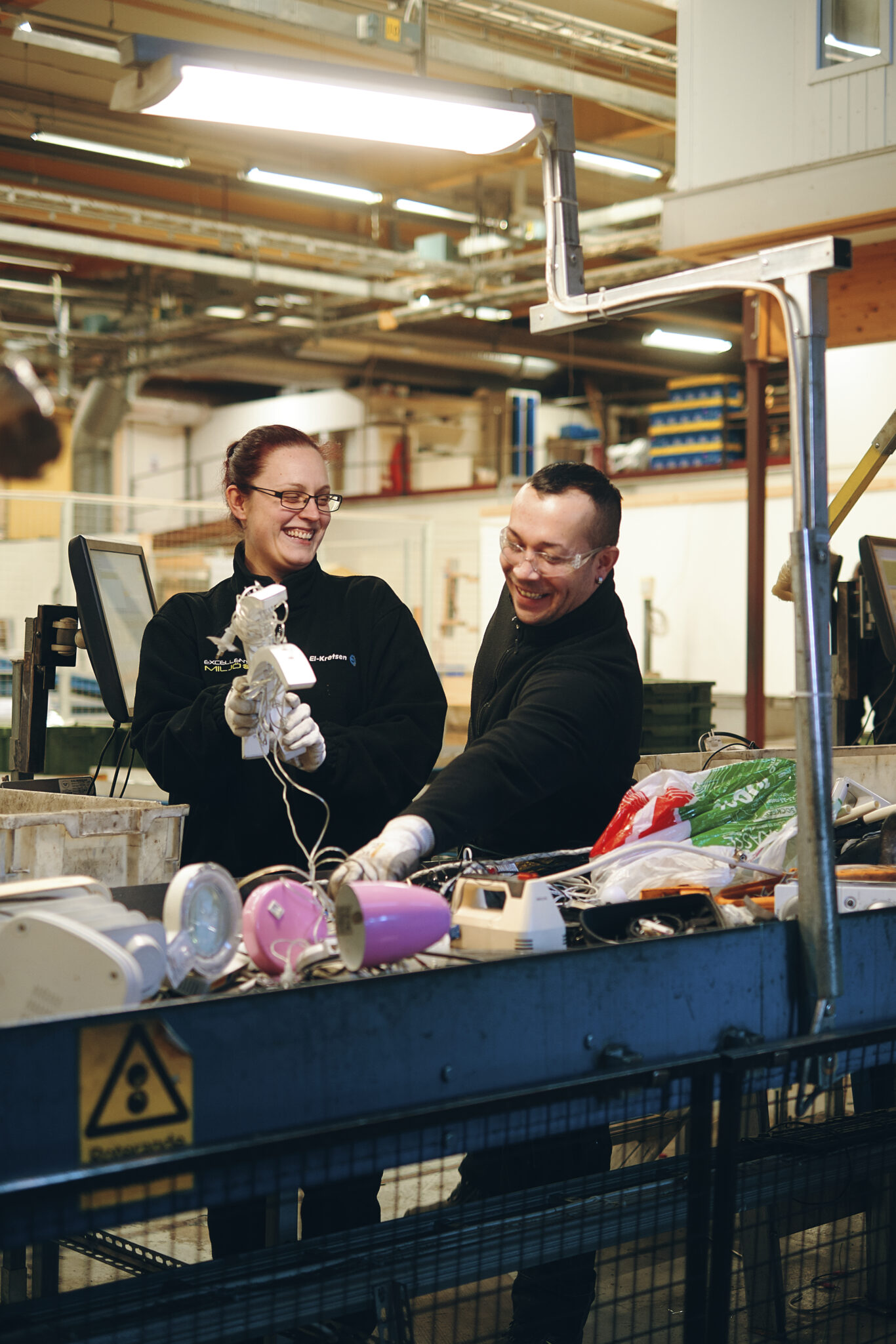Reuse and Recycling
Reuse and Refurbishment – Giving Old Electrical Products New Life
El-Kretsen’s collection system ensures that old electrical products are given new life – either as used goods on the second-hand market or as raw materials in new products. Through collaboration with municipalities and companies, models for reuse and refurbishment are being developed.
Most people who deposit items in El-Kretsen’s containers understand that they are intended for waste, not functioning products. Analyses show that only about three percent of what is handed in is assessed as having reuse potential – for example, through simple refurbishment. At the same time, both age and value must be considered. A ten- to fifteen-year-old product, even if it still works, rarely has a viable market, and the cost of repairing and selling a used product is often higher than its economic value.
El-Kretsen’s goal is to prevent functioning products from ending up in waste containers. We therefore place requirements on and support Sweden’s municipalities to ensure that their collection points actively work with the reuse of electrical products. Information on how this is carried out locally can be found on each municipality’s website.
Thanks to El-Kretsen’s own analysis facility, it is possible to monitor developments over time, observe changes in material composition, and track the proportion of hazardous waste – knowledge that is vital for the future of reuse and recycling.

Having our own analysis facility enables us to analyse the products we collect. For example, we can identify trends and changes over time, material composition and the proportions of hazardous materials.
Reusing white goods
In southern Sweden, El-Kretsen has, together with a few municipalities and the companies STENA and Begagnade Vitvaror, developed a method for sorting out white goods and cooling and freezing appliances with reuse potential. The goal has been to create sustainable solutions that reduce resource use and climate impact while also being economically self-sustaining – all under good and safe working conditions.
After refurbishment, the products are resold through retailers on the second-hand market, primarily in Europe. So far, the collected products have mainly been sold on the second-hand market in Croatia. To ensure quality and traceability, El-Kretsen requires that resellers be affiliated with approved collection systems and that the products are sold with a warranty.
Reuse of Components
The EU’s work with product passports will provide better insight into what materials and components products contain. Both producers and recyclers will gain better knowledge of a product’s composition – information that will become an important instrument in circular business models. Product passports may become a valuable tool for extending the lifespan of parts that are more durable than the product itself. For El-Kretsen, this means that in the future we will be able to extract components for reuse – either for the general second-hand market or on behalf of individual producers who wish to recover specific parts.
Reuse of Hazardous Waste
Even hazardous waste can contribute to resource recovery. Refrigerators and freezers contain both pure metals and environmentally hazardous substances. During pretreatment, before the units are sent for recycling, compressors and insulation materials containing refrigerants are removed. Gas mixtures are collected, where cyclopentane – a type of hydrocarbon – can be separated and used as a new raw material. The remaining gases are processed and converted into hydrochloric acid and hydrofluoric acid, which are then sold as new products. The oil in compressors can also be recycled. Although the collected quantities are small compared with the total weight of treated refrigeration units, the environmental benefit is significant.